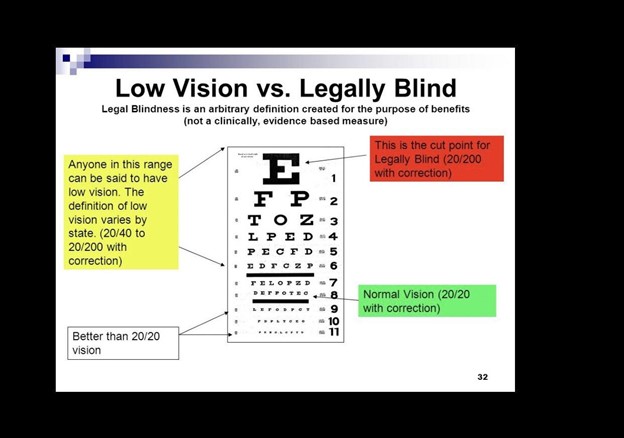The caregiver of an elderly client asks the nurse what can be done about the chronic bilateral inflammation of the eyelid margins that keeps recurring. Which of the following is the information that the nurse will provide?
Instill eye drops in both eyes every hour around the clock
Use sterile gloves when assisting with activities of daily living
Use baby shampoo on the eyelid margins
Use a salt scrub inside the eyelid
The Correct Answer is C
Choice A Reason: This choice is incorrect. Instilling eye drops in both eyes every hour around the clock is not an information that the nurse will provide, as it is not a recommended treatment for chronic bilateral inflammation of the eyelid margins. This condition is also known as blepharitis, which is a common and chronic disorder that causes redness, itching, burning, and crusting of the eyelids. Eye drops may be used to relieve symptoms, but not every hour or without a prescription.
Choice B Reason: This choice is incorrect. Using sterile gloves when assisting with activities of daily living is not an information that the nurse will provide, as it is not a necessary precaution for chronic bilateral inflammation of the eyelid margins. Blepharitis is not contagious or infectious, but rather caused by an overgrowth of bacteria or mites on the eyelids, or by an underlying skin condition such as seborrheic dermatitis or rosacea.
Choice C Reason: This is the correct choice. Using baby shampoo on the eyelid margins is an information that the nurse will provide, as it is a simple and effective way to clean and soothe the eyelids. Baby shampoo is gentle and non-irritating, and can help remove excess oil, debris, and scales from the eyelids. The nurse will instruct the caregiver to dilute a few drops of baby shampoo with warm water, apply it to a cotton ball or washcloth, and gently rub it along the eyelid margins. The nurse will also advise to rinse well with water and pat dry with a clean towel.
Choice D Reason: This choice is incorrect. Using a salt scrub inside the eyelid is not an information that the nurse will provide, as it is a harmful and painful method that can damage and irritate the eye. Salt scrub is abrasive and drying, and can cause corneal abrasion, infection, or inflammation. The nurse will warn the caregiver to avoid using any harsh or unapproved products on or near the eye.
Nursing Test Bank
Naxlex Comprehensive Predictor Exams
Related Questions
Correct Answer is B
Explanation
Choice A Reason: This is incorrect because full vision loss in one eye does not necessarily mean that the person is legally blind. Legal blindness depends on the visual acuity and visual field of both eyes.
Choice B Reason: This is correct because legal blindness is defined by the World Health Organization (WHO) as having a visual acuity of 20/200 or worse in the better eye with the best possible correction, such as glasses or contact lenses. This means that the person can see at 20 feet what a normal person can see at 200 feet.
Choice C Reason: This is incorrect because inability to see clearly from 200 feet away without corrective lenses may indicate nearsightedness or myopia, but not legal blindness. Nearsightedness can be corrected with lenses or surgery.
Choice D Reason: This is incorrect because bilateral visual impairment of 20/60 or greater does not meet the criteria for legal blindness. Visual impairment is defined by WHO as having a visual acuity of less than 20/60 but better than 20/200 in the better eye with the best possible correction.

Correct Answer is D
Explanation
Choice A Reason: This is incorrect because a referral to a sleep study program is not the most appropriate plan of care for a blind client who has difficulty with sleep. A sleep study program is used to diagnose and treat sleep disorders such as sleep apnea, narcolepsy, or restless legs syndrome.
Choice B Reason: This is incorrect because assisting the client to see if a night shift job is available is not a helpful plan of care for a blind client who has difficulty with sleep. A night shift job can disrupt the circadian rhythm and worsen the sleep quality and quantity of the client.
Choice C Reason: This is incorrect because institution of opioids and sedatives is not a safe plan of care for a blind client who has difficulty with sleep. Opioids and sedatives can cause addiction, dependence, tolerance, and withdrawal symptoms. They can also impair the respiratory and cognitive functions of the client.
Choice D Reason: This is the correct choice because education about non-24 disorder is an essential plan of care for a blind client who has difficulty with sleep. Non-24 disorder is a condition where the internal clock of the body does not synchronize with the 24-hour day-night cycle. It can cause irregular sleep patterns, daytime fatigue, and mood disturbances. It is more common in blind people who lack light perception. The nurse should educate the client about the causes, symptoms, and treatments of non-24 disorder.
Whether you are a student looking to ace your exams or a practicing nurse seeking to enhance your expertise , our nursing education contents will empower you with the confidence and competence to make a difference in the lives of patients and become a respected leader in the healthcare field.
Visit Naxlex, invest in your future and unlock endless possibilities with our unparalleled nursing education contents today
Report Wrong Answer on the Current Question
Do you disagree with the answer? If yes, what is your expected answer? Explain.
Kindly be descriptive with the issue you are facing.
